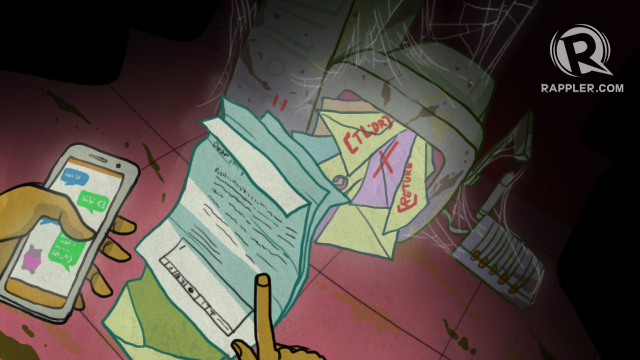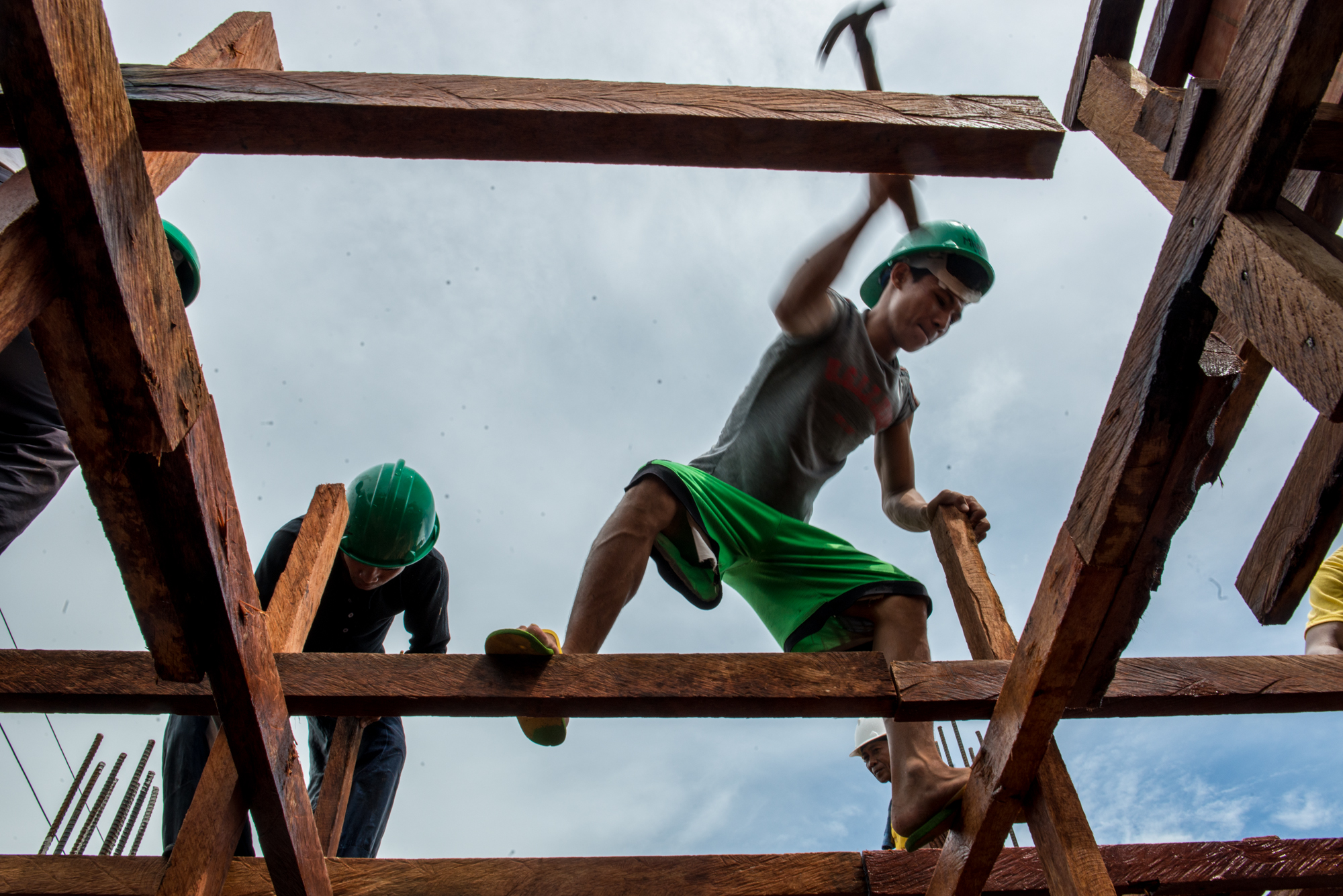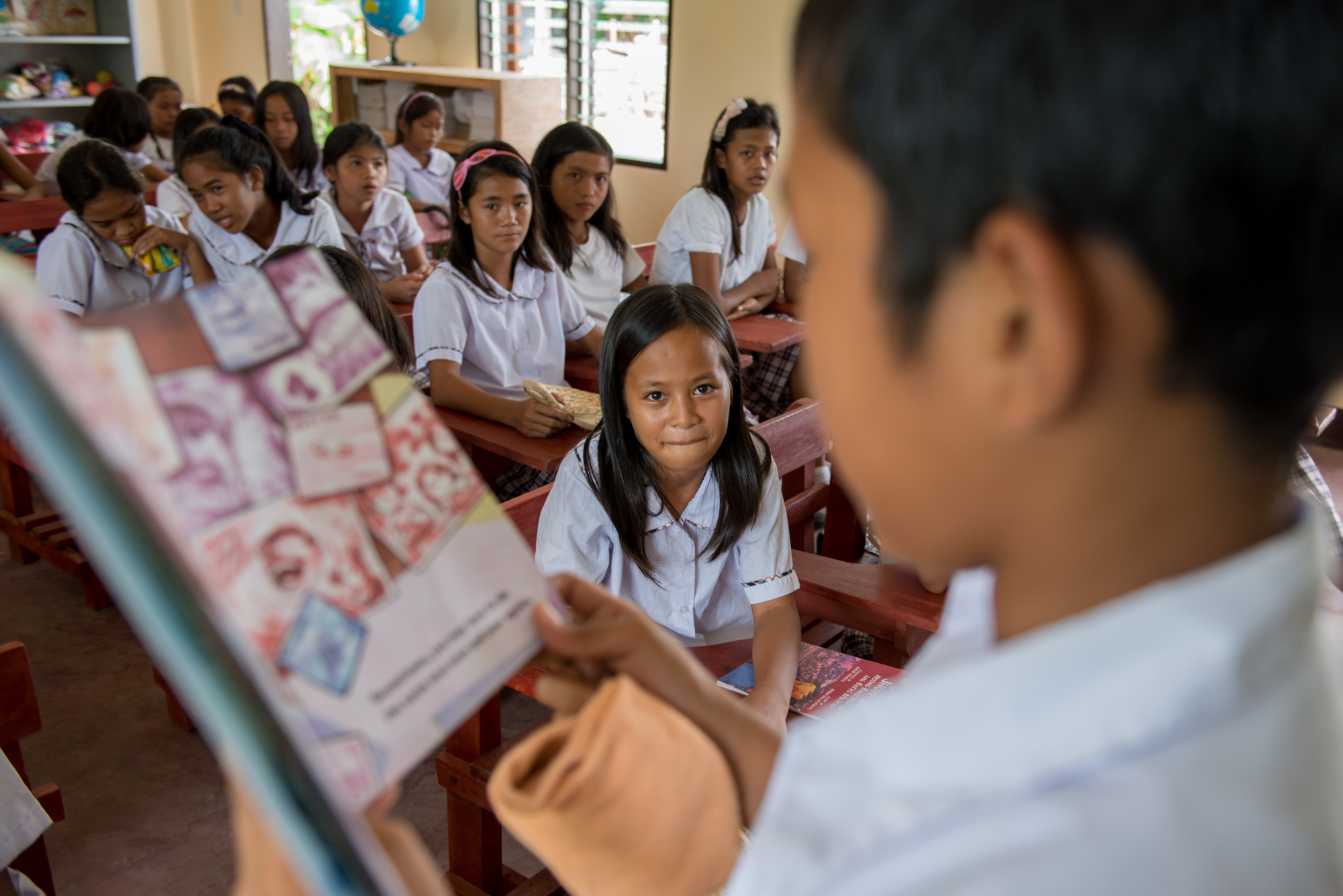
(Note: This article discusses prognosis of Stage 4 lung cancer. Anyone who has stage 4 lung cancer or is caring for anyone with lung cancer who may need psychological preparation should decide whether he or she wants to read any further.)
I thought long and hard about writing you again because I did not want to give anyone the impression that I am hounding a cancer survivor. (READ: Dear Miriam Defensor-Santiago)
In truth, when you announced you had licked Stage 4 lung cancer barely 2 months after you announced you had it, I was certain you had been gifted with a miracle. Medical science cannot explain your cure. But I know that medical science has its limits, and that many things it cannot explain do happen to a select few. The majority of Filipinos who are Catholic call that a miracle.
Whatever others who do not have a religion or God might call it, I know the limits of medical science and chose not to make a comment. Notice that despite my desire to see a miracle or know whether I had missed out on a transformative new technology leading to rapid cure, I did not write you a letter and ask for your records. I understood that you do have your rights to confidentiality. Indeed I respected your confidentiality for an entire year and would have continued to do so if you had not chosen to run for president.
An expert’s opinion
But just so you know that I am not misrepresenting the science of it, and the political implications of that science, let me quote extensively from a classmate of mine in medical school who is an oncologist in the US, Dr. Ruben Sales Escuro. (Again, let me warn anyone who has stage 4 lung cancer or is caring for anyone with lung cancer that Dr. Escuro will be talking about prognosis and if you need psychological preparation you may decide to read no further.)
“Stage 4 NSCLC (non-small cell lung cancer) in the past meant distant metastatic disease including involvement of contralateral lung. However, recent changes in cancer staging guidelines now include malignant pleural effusion as Stage 4 (M1a). M1b would indicate distant metastasis. There is a subset of patients whose tumors are positive for EGFR mutation that may potentially respond to targeted therapy using oral kinase inhibitors such as erlotinib (Tarceva) or gefitinib (Iressa). Depending on the response, these patients have the possibility of achieving complete remission, the duration of which may vary from patient to patient. Some patients, however, may only achieve a partial response or stable disease. There is also a subgroup who would have progressive disease in spite of the treatment.
"I am careful about using the term 'cure' because, for most people, laymen and medical, the word implies that the complete remission is permanent. Unfortunately, a lot of the patients who initially achieve complete remission eventually develop recurrence and progression of their disease. A better term that is more accurate is long-term disease-free survival. The phrase usually means at least five years where there is no evidence of disease. There is certainly a huge concern about a person with this condition who is running for the highest office in the land after a remission of only a year.
"Once the disease recurs, the patient may experience symptoms or side effects from medications to control these symptoms (for example, narcotic analgesics to control the pain), which may impair his or her ability to make important decisions.”
Dr. Escuro adds in his exchanges with me that: "... you are just bringing up the concerns of an oncologist about someone with a very serious illness, running for president. That will not fly here in the US. It is almost like saying, 'Rely on my vice-president’.”
Let me assure you that Dr. Escuro is politically neutral. He certainly has no strong opinions about partisan politics in the Philippines.
I do hope this longer explanation assures you and your supporters that I do not merely wish to “make a scandal in your campaign.” I am sorry that my letter comes on the heels of your decision to run. But as I said in my first letter, it was your candidacy for president that tipped the balance between your right to confidentiality and the public’s right to know. (READ: #AnimatED: Public interest trumps privacy)
Human rights
The other reason I write you a second letter is that your response to my letter opened up issues regarding human rights and patient confidentiality. As a legal expert and a human rights advocate, I am sure you are as pleased as I am that our exchange led to a national debate and a learning opportunity on these matters.
But this is where our disagreement is sharpest.
In your response you mentioned that it was a violation of your human rights to compel you to release your record. Yet, I only made a request. A request that, if you had agreed to, would have answered certain pertinent questions without violating any right or law. Because Madame Senator, I am a private citizen with less governmental power than you have. Therefore I cannot compel you in any way.
You and I know that the main goal of human rights is the protection of the rights of the individual against the state. The original libertarians who proposed the earliest versions of human rights understood that an unfettered state was one of the greatest threats to liberty. They made made sure to limit the state’s power to compel an individual. Beyond this limited sphere of legitimate state action was a large sphere of individual freedom safeguarded by such rights as the right to freedom of speech, religion, of thought and expression, bodily integrity, safety in one’s home, etc.
In other words, one has to go a very long extra mile to accuse a single individual who has done you no violence, of human rights violations.
Under your reasoning your labeling my request as a human rights violation is tantamount to violating my own freedom of thought and expression. Surely I have the right to ask you these questions, tough as they are. Surely you have the right to refuse to reveal your records, as urgent as this may seem to me and the many who have agreed with me. What we are having, Madame Senator, is a principled difference of opinions, not an attempt to violate each other’s rights.
As you also know, no right is unlimited. Each right must be circumscribed by other rights and the rights of others. And I cannot over-emphasize that my request was made because I believe your right to confidentiality is now outweighed by the public’s right to know.
I would offer a compromise which I should have already stated in my first letter: release only those documents that go to the status of your lung cancer: diagnosis, treatment course, current status. Or if you prefer, I would even accept a medical certificate from any of your doctors that a cure has indeed occurred, although going by Dr. Escuro’s expertise, you have not surpassed the 5-year period that qualifies as “long term disease survival.”
Patient’s rights
For the sake of public information and a deeper understanding of patient rights, I need to point out that limited and voluntary releases of confidentiality are requested all the time and happen all the time. When we ask our doctors to give ourselves or our children “excuse slips” from work or school, this is only done upon our express consent.
When a psychologist or psychiatrist recommends family therapy, this cannot push through without the patient’s consent because many of the things that will be discussed with family members will be things said to the therapist in individual therapy.
There is also implied consent on the part of the patient when his or her case is discussed by a team of doctors. Otherwise the first physician, the attending physician, cannot reveal information to other members of the team.
As someone who has given free services to rape and battered women, I have often testified in court about my diagnosis, the course of their therapy, whether they were faking certain symptoms, etc. Without this limited release of confidentiality this would not be possible. But patients need to know that I cannot testify for them, unless they wish me to do so. Certainly if a physician testifies against them, it is a violation of their rights unless on rare occasions that this is done with the consent of the patient.
All these instances must be made clear also so that people’s understanding of their rights is increased. Their right to confidentiality is not absolute and it is often to their advantage if people agree to release information.
The sanctity of hospitals
I must say I am also deeply bothered by your statement that I could request a release of your records from the hospitals which hold them. This is futile, because without your expressed permission, this is not possible.
Because many people take your word as gospel truth, I am worried about what this does to medical institutions. People must know that hospitals, clinics, infirmaries, lying-ins, etc. cannot reveal their records by the mere request of any citizen.
Consent is necessary. Let us not put any doubt in people’s minds that would make them hesitate to seek medical aid and confide fully to health personnel and institutions.
Compassion for survivors
The final reason I speak out is for the sake of compassion.
Locally based oncologists have reached out to me because, since your declaration of cancer recovery, patients have besieged them asking for a cure (“magic pills”) for advanced cancer. But they do not have such a cure. This, to me, is utterly heartbreaking.
These heroic doctors have a very difficult job. They need to work with their patients to ensure that they stay in fighting form so that options can be discussed, decided upon and acted on. Just because a cure has not yet been developed does not mean people must give up hopes for remission or, absent that, therapies that will help the person be functional and stay comfortable for as long as possible. Many things can be done to ensure equally compassionate objectives like human dignity and psychological (spiritual) growth, no matter how long the patient has left.
But they cannot do this by denying what science tells us and encouraging false hopes and delusions. It would be counterproductive to these equally compassionate goals.
Another group of people who have reached out to me are those taking care of someone with stage 4 lung cancer or had taken care of someone who had passed. These people feel very strongly about the issue. The road they traveled to acceptance and peace was and is difficult. Somehow your statements seemed to say that they were wrong to accept the inevitable. That their resignation to the harsh truth, which is so necessary to their own strength and healing, was unfounded.
As many of those who deal with misfortune or have survived it will tell us, the real lack of compassion here is to pretend that life is always rosy or fair and filled with colorful miracles. Instead like all the great spiritual leaders and philosophers tell us, life can be harsh but that does not mean that it isn’t still beautiful and wonderful even to those given bad cards.
For all these reasons, I had the presumption to request you to show us the truth behind your miracle cure. For the same reasons I have had the temerity to write you again.
In my first letter as in this one, I write because I have always considered you a person worthy of being asked these tough questions. Questions about human rights and democracy, life and death, are not for the stupid or the cowardly.
If for some reason I have upset you despite my admiration and the best of intentions, then I ask for your understanding. – Rappler.com
Sylvia Estrada-Claudio is a doctor of medicine who also holds a PhD in Psychology.


 After days of fighting the scorching heat and muddy roads, our team finally reached the Agta community in an island barangay in Casiguran, Aurora — the area where
After days of fighting the scorching heat and muddy roads, our team finally reached the Agta community in an island barangay in Casiguran, Aurora — the area where 
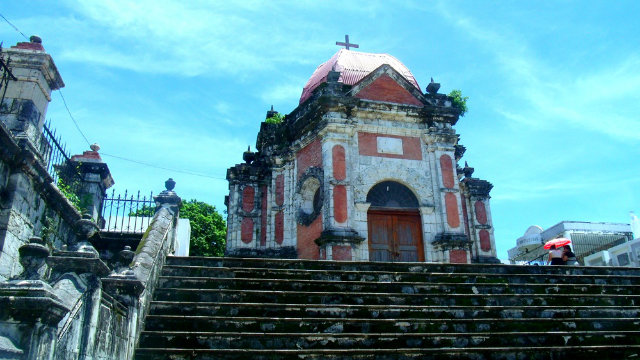


 “It’s not always about sex. Some men just want to talk.”
“It’s not always about sex. Some men just want to talk.”
 Today marks the 13th anniversary of my move from Manila to New York. I remember it like it was yesterday - from the tearful goodbyes of my friends and family at the airport, to the long haul flight from one hemisphere to another, to seeing the happy face of someone I loved in a crowd when I landed in JFK.
Today marks the 13th anniversary of my move from Manila to New York. I remember it like it was yesterday - from the tearful goodbyes of my friends and family at the airport, to the long haul flight from one hemisphere to another, to seeing the happy face of someone I loved in a crowd when I landed in JFK. 
 How about we do this? Let our Marines attack the
How about we do this? Let our Marines attack the 

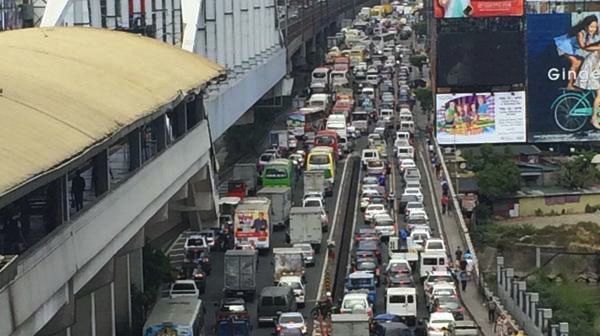


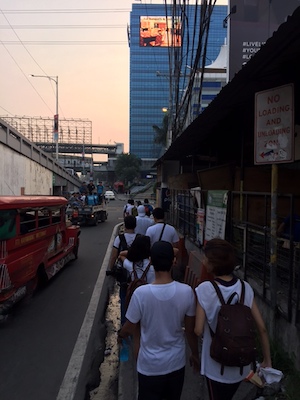

 The
The 
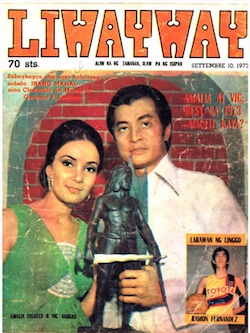







 For the first time in anyone’s memory, foreign policy and national security are poised to figure as major issues in the Philippine presidential election, scheduled for May 2016. Recent polls show Filipinos are worried about China and its aggressive stance in the South China Sea. They also fear that economic dependence on China could be leveraged to force concessions on the Philippines’ sovereignty. These are not unreasonable views, given that Chinese vessels now occupy Scarborough Shoal, just 140 miles from the Philippines’ northern Luzon Island, and that China’s nine-dash line nearly intersects with the Philippines’ Palawan Province. Filipinos are demanding that their leadership establish a credible defense posture for the country.
For the first time in anyone’s memory, foreign policy and national security are poised to figure as major issues in the Philippine presidential election, scheduled for May 2016. Recent polls show Filipinos are worried about China and its aggressive stance in the South China Sea. They also fear that economic dependence on China could be leveraged to force concessions on the Philippines’ sovereignty. These are not unreasonable views, given that Chinese vessels now occupy Scarborough Shoal, just 140 miles from the Philippines’ northern Luzon Island, and that China’s nine-dash line nearly intersects with the Philippines’ Palawan Province. Filipinos are demanding that their leadership establish a credible defense posture for the country.

 "Past is past."
"Past is past."

 Philippines techpreneurs, take note.
Philippines techpreneurs, take note.
